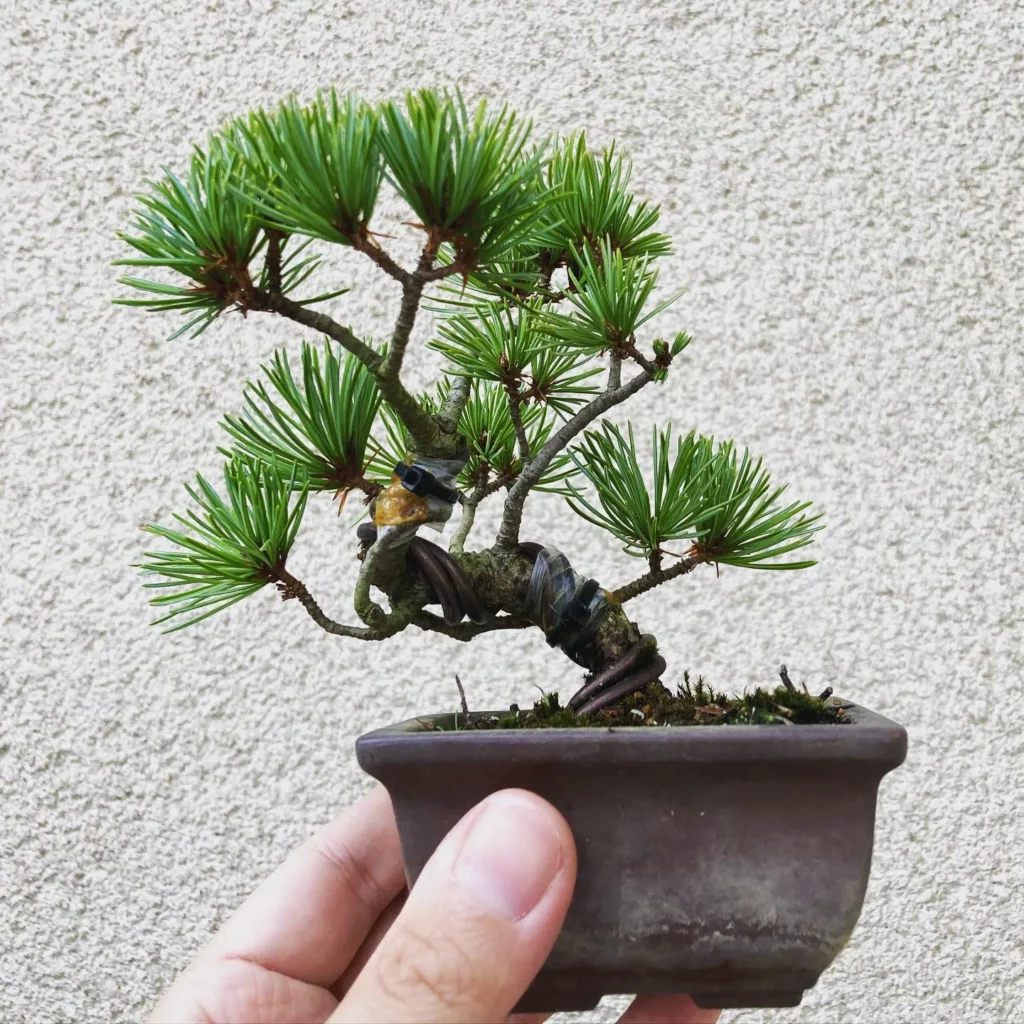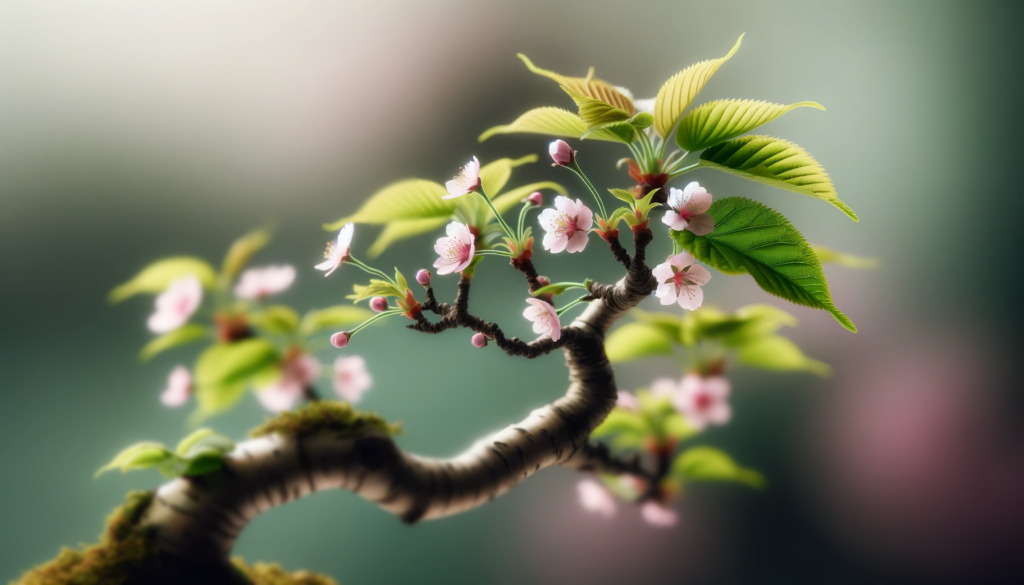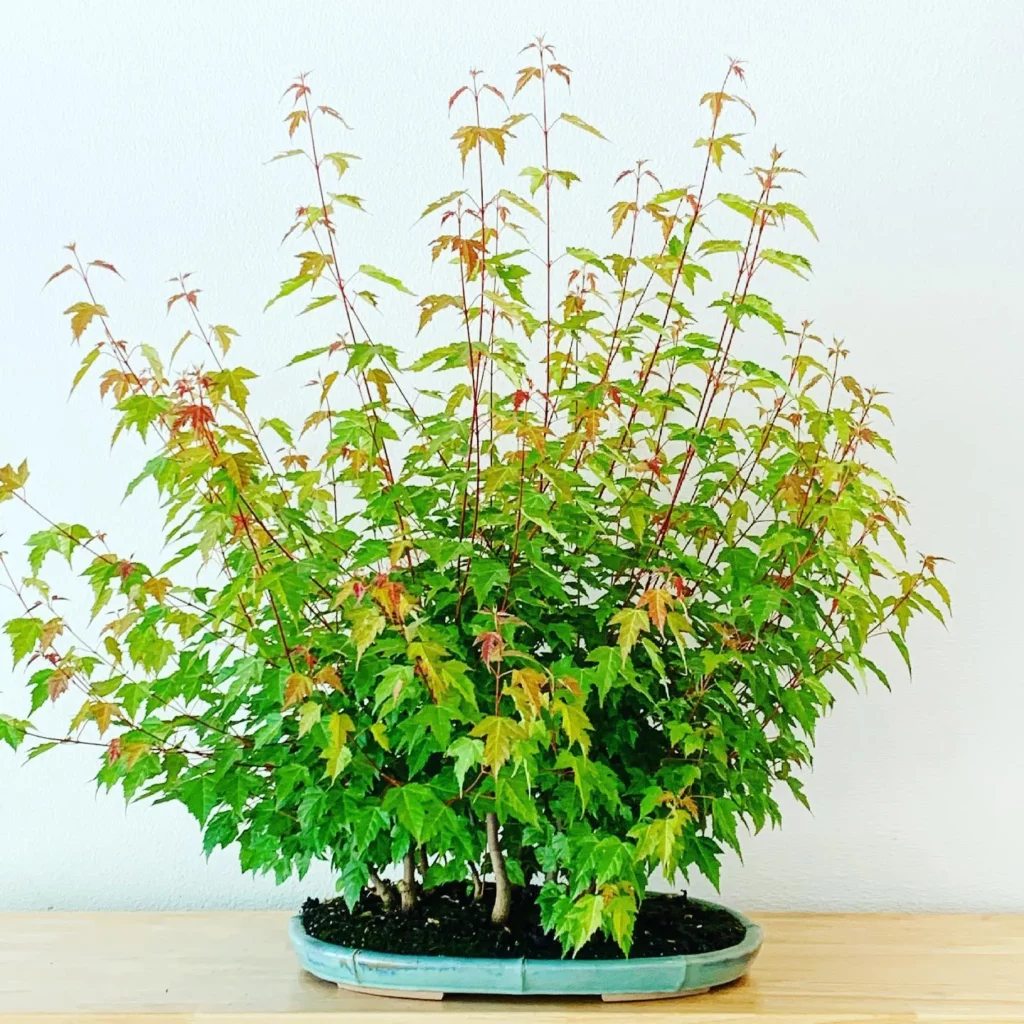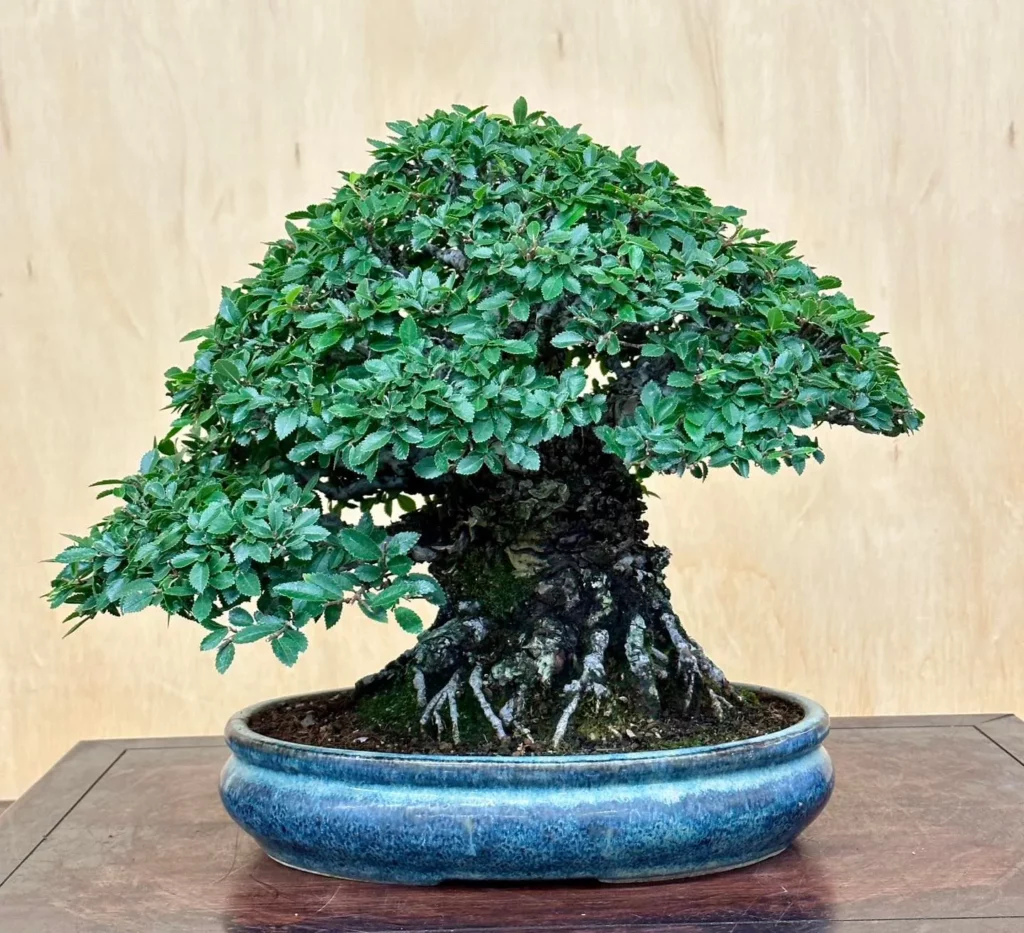The Fuchsia Bonsai is a captivating plant that showcases its beauty through its vibrant double petal blooms. These blooms come in various shades of pink, adding an elegant and charming touch to any indoor or outdoor environment.
Appearance of Fuchsia Bonsai



The Fuchsia Bonsai is available in different sizes, including medium, mini, and small, making it a versatile choice for any space. Whether you have a spacious garden or a compact apartment, this plant can fit seamlessly into your surroundings.
This stunning plant thrives best in subtropic climates, where it can enjoy the ideal conditions for growth and development. If you live in an area with a subtropic climate, the Fuchsia Bonsai is an excellent option for creating a visually stunning display in your garden or indoor space.
Light Requirements for Fuchsia Bonsai



Fuchsia Bonsai is a beautiful plant that requires a warm and well-lit area to thrive. To ensure optimal growth and development, it is essential to place your Fuchsia Bonsai in a location that receives ample sunlight, especially if you live in a subtropic climate.
In order to provide the best light conditions for your Fuchsia Bonsai, it is important to find the right balance. While the plant loves sunlight, it is crucial to provide some shade during the hottest part of the day to prevent it from getting sunburned. Too much direct sunlight can be harmful to the plant, so a well-lit area with partial shade is ideal.
You can consider placing your Fuchsia Bonsai near a window or in a spot where it can receive bright, indirect sunlight throughout the day. This will allow the plant to soak up the necessary light while avoiding any excessive heat or direct exposure.
Key points:
- Place your Fuchsia Bonsai in a warm and well-lit area.
- Ensure the plant receives ample sunlight, especially in subtropic climates.
- Provide some shade during the hottest part of the day to prevent sunburn.
- Find the right balance of light for optimal growth and development.
Watering Fuchsia Bonsai



Fuchsia Bonsai requires regular watering to maintain consistent moisture in the soil. Adequate watering is crucial for the overall health and vitality of your Fuchsia Bonsai. However, it is important to avoid overwatering, as this can lead to root rot and other issues. To ensure optimal watering, follow these guidelines:
- Check the soil: Before watering, check the top inch of soil. If it feels dry to the touch, it’s time to water the plant.
- Water gently: When watering your Fuchsia Bonsai, pour water gently over the soil to avoid disturbing the roots. A gentle and steady stream of water will help the soil absorb the moisture evenly.
- Avoid waterlogging: Overwatering can cause the roots to suffocate and rot. To prevent waterlogging, make sure that the potting soil is well-drained. Excess water should be able to flow out of the drainage holes at the bottom of the pot.
- Establish a watering routine: Create a watering schedule based on the moisture needs of your Fuchsia Bonsai. Depending on the climate and humidity levels, you may need to water the plant every few days or once a week. Observe the soil and adjust the watering frequency accordingly.
Fertilizing Fuchsia Bonsai



Fuchsia Bonsai, like any other plant, benefits from regular fertilizing to promote healthy growth and vibrant blooms. This is especially important during the spring to summer months when the plant is actively growing and flowering. To nourish your Fuchsia Bonsai, it is recommended to use an organic fertilizer that provides a balanced blend of essential nutrients.
Organic fertilizers are derived from natural sources and offer numerous advantages for your Fuchsia Bonsai. They supply the necessary macro and micro nutrients that support overall plant health, enhance root development, and encourage abundant and colorful blooms. These organic fertilizers are also gentle on the environment, promoting sustainable gardening practices.
When fertilizing your Fuchsia Bonsai, it is crucial to follow the instructions provided on the fertilizer packaging. This ensures accurate dosages and prevents over-fertilization, which can harm the plant. Applying too much fertilizer can lead to nutrient imbalances, burning of the roots, and reduced overall vigor.
In addition to using an organic fertilizer, consider incorporating a slow-release fertilizer specifically formulated for bonsai, as it provides a steady supply of nutrients over an extended period. This helps maintain a consistent level of fertilization and minimizes the risk of nutrient deficiencies or excesses.
Key Points:
- Fuchsia Bonsai benefits from regular fertilizing, especially during spring to summer.
- Organic fertilizers promote healthy growth and abundant blooms.
- Follow the instructions on the fertilizer packaging to avoid over-fertilizing.
- Consider using a slow-release fertilizer for consistent nutrient supply.
Potting Fuchsia Bonsai



Proper potting is essential for the health and vitality of your Fuchsia Bonsai. When potting your plant, consider the following:
- Choose a well-drained soil mix to prevent waterlogging and root rot. A mix of peat moss, perlite, and pine bark is highly recommended.
- Ensure the pot has adequate drainage holes to allow excess water to escape.
- When repotting, select a slightly larger pot to provide enough space for the roots to grow and develop. Repotting every 2 years is generally recommended.
- Handle the plant with care during repotting to avoid damaging the delicate roots.
- Place a layer of soil in the bottom of the new pot and gently lower the Fuchsia Bonsai into it, ensuring the plant is positioned at the same depth as before.
- Add soil around the sides of the root ball, gently pressing it down to secure the plant in place.
- Water the newly potted Fuchsia Bonsai thoroughly to help settle the soil and promote root establishment.
Propagation of Fuchsia Bonsai


Fuchsia Bonsai can be easily propagated through seed cultivation, making it an ideal choice for beginners. The process is straightforward and allows for the expansion of your Fuchsia Bonsai collection.
Seed Cultivation
To propagate Fuchsia Bonsai from seeds, start by scattering the seeds onto well-drained soil. Lightly cover them with a thin layer of soil.
With proper care and maintenance, the seeds will germinate within a few weeks, giving rise to new plants. Be sure to provide the necessary sunlight, water, and nutrients to support healthy growth.
- Scatter the seeds on well-drained soil
- Lightly cover them with a thin layer of soil
- Provide adequate sunlight, water, and nutrients
- Ensure proper care and maintenance
Growth and Development of Fuchsia Bonsai
Fuchsia Bonsai is a versatile plant that exhibits different growth patterns and sizes, making it suitable for various spaces. The plant is available in mini, medium, and small sizes, allowing you to choose the perfect fit for your garden or indoor space. With its vibrant double-petal blooms, the Fuchsia Bonsai adds a touch of elegance and color to any environment.
On average, Fuchsia Bonsai takes approximately 8-10 weeks to reach maturity and start blooming. During this time, the plant undergoes significant growth and development, establishing a strong root system and preparing to showcase its beautiful blooms.
The growth and development of your Fuchsia Bonsai are influenced by several factors, including light, water, and temperature. Providing adequate sunlight, regular watering, and maintaining the ideal temperature range will promote optimal growth and ensure a vibrant display of blooms.
Pests and Diseases of Fuchsia Bonsai
Fuchsia Bonsai is a stunning plant, but like any other, it is susceptible to pests and diseases. However, with moderate resistance and proper care and maintenance, you can keep your Fuchsia Bonsai healthy and thriving.
Common pests that can affect your Fuchsia Bonsai include aphids and spider mites. These tiny creatures can suck the sap from the leaves, causing them to wither and yellow. Regular inspection of your plant will help you detect these pests early on. If you notice any infestation, you can control them with organic insecticides or by introducing natural predators like ladybugs.
In addition to pests, Fuchsia Bonsai can also suffer from diseases such as root rot and powdery mildew. Overwatering and poor drainage can lead to root rot, which causes the roots to decay and eventually kills the plant. To prevent this, ensure that your bonsai is potted in well-drained soil and water it only when the top inch of soil feels dry. Powdery mildew, a fungal infection, can be controlled by improving air circulation around the plant and applying fungicides if necessary.
FAQ
What is the appearance of a Fuchsia Bonsai?
The Fuchsia Bonsai is known for its double petal blooms, which come in vibrant shades of pink. The plant itself has medium, mini, and small sizes, making it versatile enough to fit into any space.
What are the light requirements for a Fuchsia Bonsai?
Fuchsia Bonsai requires a warm and well-lit area to thrive. It is best placed in a location that receives ample sunlight, especially in subtropic climates. However, it is important to provide some shade during the hottest part of the day to prevent the plant from getting sunburned.
How often should I water my Fuchsia Bonsai?
Fuchsia Bonsai requires regular watering to maintain consistent moisture in the soil. It is best to water the plant when the top inch of soil feels dry to the touch. Watering should be done gently to avoid disturbing the roots.
How should I fertilize my Fuchsia Bonsai?
Fuchsia Bonsai benefits from regular fertilizing, especially during the spring to summer months. Using an organic fertilizer can promote healthier growth and more abundant blooms. It is important to follow the instructions on the fertilizer packaging and avoid over-fertilizing.
What type of soil should I use for potting my Fuchsia Bonsai?
Fuchsia Bonsai should be potted in well-drained soil to prevent waterlogging and root rot. It is recommended to repot the plant every 2 years to ensure that it has enough space to grow and develop.
How can I propagate a Fuchsia Bonsai?
Fuchsia Bonsai can be propagated through seed cultivation. The seeds can be scattered on well-drained soil and lightly covered with a thin layer of soil. With proper care and maintenance, the seeds will germinate within a few weeks, giving rise to new plants.
How long does it take for a Fuchsia Bonsai to grow and develop?
Fuchsia Bonsai exhibits different growth patterns and sizes, ranging from mini to medium and small sizes. The plant typically takes 8-10 weeks to reach maturity and start blooming.
What pests and diseases can affect a Fuchsia Bonsai?
Fuchsia Bonsai has a moderate resistance to pests and diseases when provided with proper care and maintenance. Common pests that may affect the plant include aphids and spider mites, while diseases such as root rot and powdery mildew can also pose a threat.




